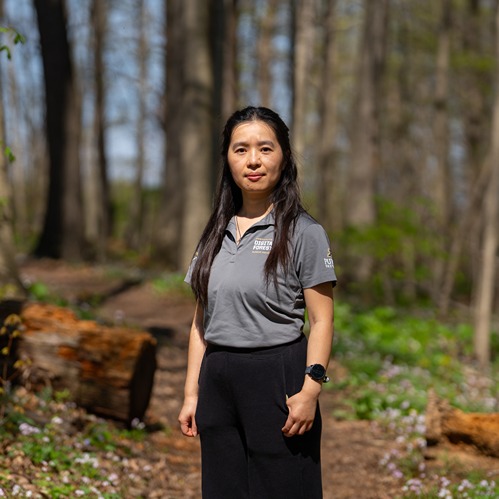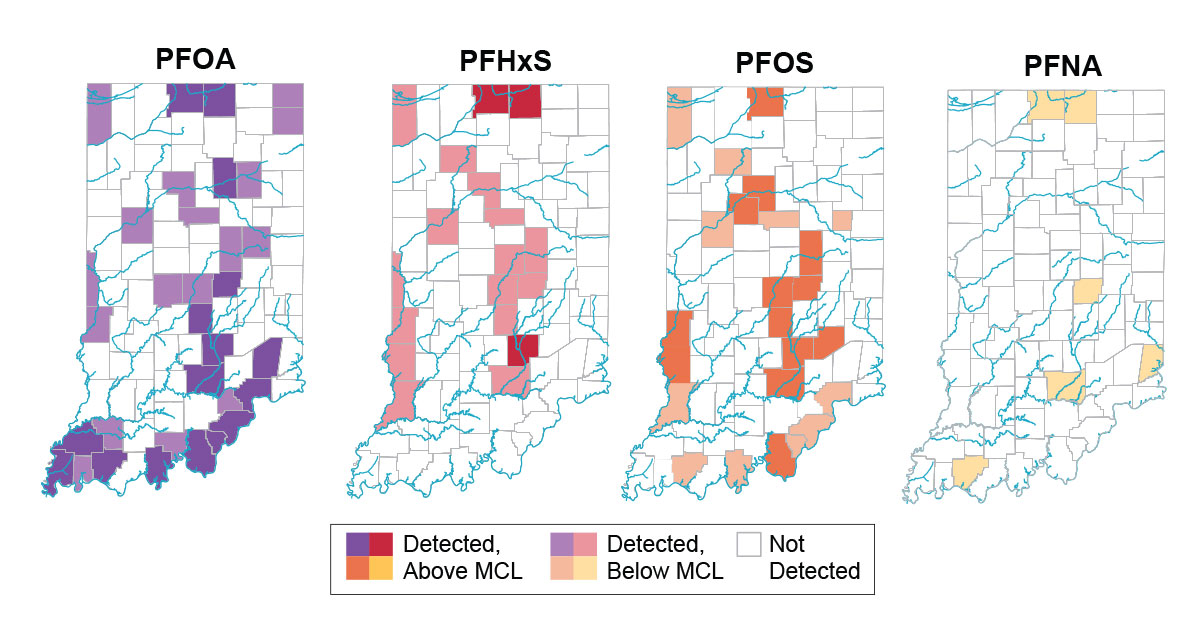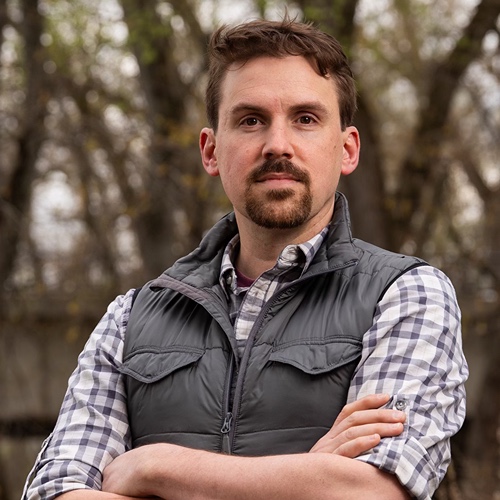In this segment of the FNR 2022 Year in Review, we take a look at the research advances, breakthroughs, grants and publications produced by FNR faculty, staff, alumni and students in 2022. We also look at the outreach and extension opportunities from the year from videos to presentations, posters and publications.
Check out FNR Year in Review 2022: The People for a look at the people of FNR, including awards, recognition and media appearances by faculty, staff, alumni and students.
Facility/Research Improvements
FNR dedicated the Wildlife Ecology Research Facility, located on site of the Purdue Wildlife Area. The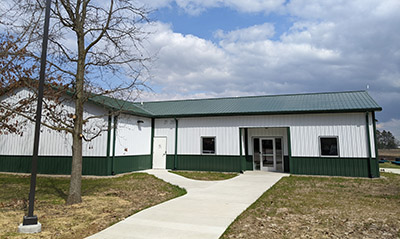 WERF building is a state-of-the-art facility greatly increases the department's capacity for wildlife-based research, and will allow researchers to answer many questions about the ecology, ecotoxicology and disease ecology for a wild array of wildlife species.
WERF building is a state-of-the-art facility greatly increases the department's capacity for wildlife-based research, and will allow researchers to answer many questions about the ecology, ecotoxicology and disease ecology for a wild array of wildlife species.
College of Agriculture Dean Karen Plaut and Provost Jay Akridge joined Dr. Songlin Fei for the opening of the digital forestry facility at the Wright Forestry Center in August.
Martell Forest now has a detailed weather station on site, with professor of forestry and natural resources and biological sciences Jeff Dukes spearheading the project and Indiana state climatologist Beth Hall of the Indiana State Climate Office offering her full support.
Faculty, staff and students in FNR will now have access to a rare specimen of an extinct passenger pigeon thanks to the donation of Purdue alumnus Andrew Howe.
Research Awards
The article “Chronic Per-/Polyfluoroalkyl Substance Exposure Under Environmentally Relevant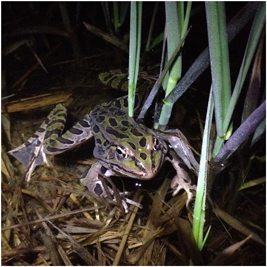 Conditions Delays Development in Northern Leopard Frog (Rana Pipiens) Larvae” was named as one of Environmental Toxicology and Chemistry (ET&C)’s Top 10 Exceptional Papers of 2021. The paper was co-authored by Wes Flynn, research ecologist for the U.S. Geological Survey, Drs. Marisol Sepulveda and Jason Hoverman and former lab technician Michael Iacchetta from FNR; and Dr. Linda Lee and Chloe De Perre in the Purdue Department of Agronomy.
Conditions Delays Development in Northern Leopard Frog (Rana Pipiens) Larvae” was named as one of Environmental Toxicology and Chemistry (ET&C)’s Top 10 Exceptional Papers of 2021. The paper was co-authored by Wes Flynn, research ecologist for the U.S. Geological Survey, Drs. Marisol Sepulveda and Jason Hoverman and former lab technician Michael Iacchetta from FNR; and Dr. Linda Lee and Chloe De Perre in the Purdue Department of Agronomy.
Dr. Andrew DeWoody and Samarth Mathur’s paper “Genetic load has potential in large populations but is realized in small inbred populations” was recognized as a Top Cite Article in Evolutionary Applications for 2021-22. Their paper “The long-standing significance of genetic diversity in conservation” was honored as a top cited article in Molecular Ecology for 2021-22.
Dr. Linda Prokopy was honored for Best Research Paper for Impact and Quality published in the Journal of Soil and Water Conservation for the paper “Adoption of agricultural conservation practices in the United States: Evidence from 35 years of quantitative literature.” She also earned the Outstanding Achievement Award – Academic sector from the Indiana Water Resources Association in June.
Master’s student Meredith Scherer was awarded first place among graduate students in the basic science category for her poster presentation “Does Salinity Mediate the Toxicity of Perfluorooctanesulfonic Acid in Estuarine Larvae and Embryos” at the Joint Aquatic Sciences meeting in May.
Research Breakthroughs
The research of a team of scientists led by Dr. Jingjing Liang, created the first data estimate of the total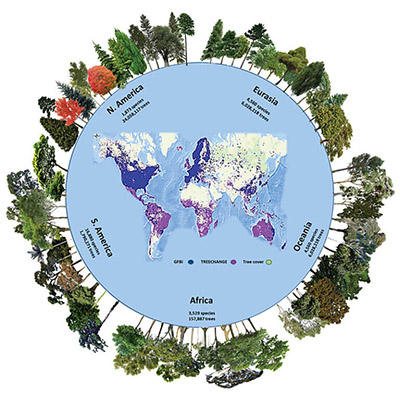 number of tree species on earth. Data estimates 73,300 tree species in the world, with over 9,000 yet to be discovered.
number of tree species on earth. Data estimates 73,300 tree species in the world, with over 9,000 yet to be discovered.
Liang, founder and chief science officer of Science-I, announced the launch of the web platform, which can be used for international research collaboration.
Purdue and the U.S. Forest Service debuted a new and improved version of the Alien Forest Pest Explorer interactive web tool, which offers maps of pest species distributions; the growth, mortality and removal rates of host species; as well as trends in host abundance and information about the pests
A study, that analyzed a database of unrivaled size and detail to understand the geographic variation of local tree species richness across the world’s forested regions, and the underlying causes of this global pattern, was published in Nature Ecology and Evolution. The research, based on 1.3 million sample plots and 55 million trees archived in the Global Forest Biodiversity Initiative database, was led by Liang and included 249 co-authors from 50 countries.
Drs. Songlin Fei and Brady Hardiman are involved a project which hopes to one day help urban planners and policymakers craft better spaces for people and the environment. Learn more in “Throwing Shade: A.I. Project A Breakthrough in Urban Forestry.”
Funded by the Hardwood Tree Improvement and Regeneration Center (HTIRC), Drs. Guofan Shao and Keith Woeste supervised engineering and computer science undergraduates in developing an automated tree imaging system with stereo cameras. After four years of systematic experiments, the camera system is close to operational use for measuring tree stem diameters at different heights, stem straightness, and volume. Bowen Li, a FNR master’s student, helped test the system by measuring 6,000 trees at ArborAmerica. This test demonstrated that this system would become a reliable tool for hardwood tree growers to better monitor the development of their planted forests.
How lightning travels from the sky to the ground inspired the concept behind a new algorithmic approach to digitally separate individual trees from their forests in automatic forest mapping. Hardiman and Fei are among the co-authors on the publication “An Unsupervised Canopy-to-Root Pathing (UCRP) Tree Segmentation Algorithm for Automatic Forest Mapping.”
Postdoc Landon Jones, co-PIs Pat Zollner and Rob Swihart, and collaborators from Indiana Department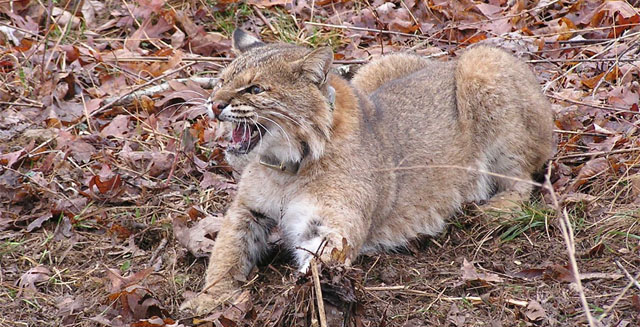 of Natural Resources and Purdue’s Department of Computer Science, developed an improved method to estimate carrying capacity of territorial wildlife species, resulting in the ability to compute estimates of bobcat carrying capacity over areas as large as the state of Indiana.
of Natural Resources and Purdue’s Department of Computer Science, developed an improved method to estimate carrying capacity of territorial wildlife species, resulting in the ability to compute estimates of bobcat carrying capacity over areas as large as the state of Indiana.
PhD candidate Alison Ochs and co-advisors Mike Saunders and Rob Swihart evaluated responses of woodland salamander populations to forest management initiated over a decade ago. Salamanders only responded negatively to timber harvest after several years, and the response appeared to be amplified by a drought. The potential interactive effects of harvest and drought could be more dangerous to salamanders in the future if a changing climate produces more frequent droughts.
Zack Delisle, who successfully defended his PhD dissertation in January 2023, and collaborators from the Integrated Deer Management Project showed that detection of deer from aircraft can be improved by using two types of sensors: an infrared sensor to highlight heat images, and a visible-light camera to verify the identity of the heat source. Aerial estimation of deer density is more cost-effective than other possible approaches and should prove useful to agencies seeking to monitor populations of large species in temperate regions.
Grants
Drs. Bryan Pijanowski and Jingjing Liang were awarded funding from NASA for their 3-year project using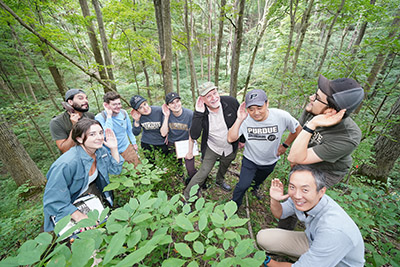 bioacoustic and space-based sensors to develop a large biodiversity framework. The research team’s work in some wild and remote places around the globe, from Tanzania’s Miombo Woodlands, Mongolia’s savanna and forest-steppe ecosystems, and the mangroves of the Sundarbans UNESCO World Heritage Site in Bangladesh, was featured in the story “Assessing Global Biodiversity with Ears to the Ground, NASA Eyes in the Sky.”
bioacoustic and space-based sensors to develop a large biodiversity framework. The research team’s work in some wild and remote places around the globe, from Tanzania’s Miombo Woodlands, Mongolia’s savanna and forest-steppe ecosystems, and the mangroves of the Sundarbans UNESCO World Heritage Site in Bangladesh, was featured in the story “Assessing Global Biodiversity with Ears to the Ground, NASA Eyes in the Sky.”
Dr. Marisol Sepulveda received an AgSeed Grant for her project "Establishing Northern leopard frogs as a model for toxicology and the global research community through reference genome assembly and annotation." The project, which also includes FNR postdoctoral researcher Tyler Hoskins, aims to generate a high-quality draft genome assembly of the Northern leopard frog, Rana pipiens, using long and short-read sequencing technologies and a comprehensive gene call set using already sequenced transcriptomic resources.
Drs. Jason Hoverman and Marisol Sepulveda, Jeffrey Youngblood and Carlos Martinez received a SERDP grant for their project “Development of PFAS-free fire extinguishing foam.”
The “Farmers Helping Hellbenders” project, led by Dr. Rod Williams and Purdue Extension wildlife specialist/Help the Hellbender project coordinator Nick Burgmeier, is set to receive $2.7 million in funding through the RCCP Classic fund. The project aims to improve hellbender habitat in a four-county region in south central Indiana, the only remaining habitat for hellbenders in the state, by expanding the use of agricultural conservation practices that lead to decreased sedimentation in local rivers systems. Williams talks more about hellbenders and the project in this YouTube video.
Dr. Pat Zollner is part of a $1 million USDA grant, led by Darrin Karcher, associate professor in animal sciences. The team will reconstruct the environment for cage-free hens through the bird’s eyes with Zollner assisting in the agent-based modeling, which will be used to compare predicted outcomes (chicken welfare and egg laying success) between different scenarios for alterative designs of cage free housing.
sciences. The team will reconstruct the environment for cage-free hens through the bird’s eyes with Zollner assisting in the agent-based modeling, which will be used to compare predicted outcomes (chicken welfare and egg laying success) between different scenarios for alterative designs of cage free housing.
Purdue University has received $12 million of a $35 million project led by the American Forest Foundation and funded by the U.S. Department of Agriculture’s Partnership for Climate Smart Commodities to help family forest owners practice climate-smart forestry in Indiana and eight other states throughout the eastern half of the U.S. The project, which falls under Purdue’s Digital Forestry initiative led by Dr. Songlin Fei, could sequester an estimated 4.9 million tons of atmospheric carbon—a greenhouse gas that affects climate—over a 20- to 30-year period.
A nearly $1 million grant from Advanced Research Projects Agency-Energy aims to develop a transformational “living” wood with the strength of steel, self-healing capabilities and combined carbon-sequestering benefits from wood and microbes. The project is co-led by Tian Li in Mechanical Engineering and Dr. Eva Haviarova, professor of wood products engineering.
Haviarova is also the primary investigator for a grant studying “Using Low-value Hardwoods for Production of School Furniture,” funded by the USDA Forest Service Wood Innovation Program. Henry Quesada, assistant director of extension and ANR Program Leader, is a Co-PI on the project.
Funded by a $847,844 grant from the National Science Foundation, Wanju Huang, clinical assistant professor in the College of Education, and fellow Purdue researchers, including FNR's Dr.Jake Hosen, will create a cyber training curriculum for CWE sustainability.
A team including personnel from Illinois-Indiana Sea Grant was awarded funds to support work on a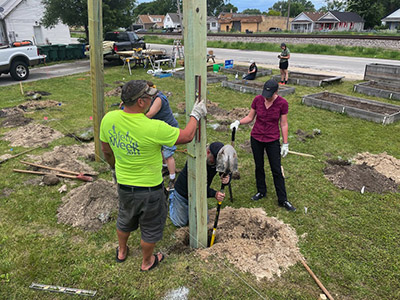 community garden/urban farm through a national competition aimed at creating water equity with their project “One Block at a Time.” Learn more about this project, which addresses water equity in marginalized neighborhoods.
community garden/urban farm through a national competition aimed at creating water equity with their project “One Block at a Time.” Learn more about this project, which addresses water equity in marginalized neighborhoods.
Dr. Elin Jacobs received a three-year, $911,000 grant from the U.S. Department of Energy to explore how tree roots help redistribute water in the soil. She will study how water flow from soils through plants and into the atmosphere and the impact of increasingly occurring droughts on that process.
Drs. Mo Zhou, Mike Jenkins and Jingjing Liang along with Extension forester Don Carlson will be assessing the effectiveness, cost-effectiveness and risk of invasive species control through federal assistant in the Great Lakes area, thanks to a nearly $100,000 from Natural Resources Conservation Services.
The Goforth Lab received a 104B small grant from the Indiana Water Resources Research Center for its project Agricultural Ditch Biotic Integrity Assessment – An Ex-stream Context.
FNR Research in the Media
Dr. Rod Williams' hellbender research, the Purdue rearing lab and more than 12 years of the lab's work are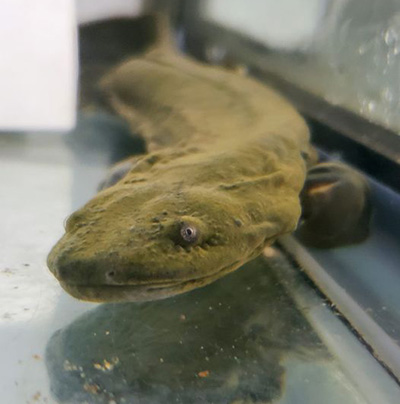 featured in a new documentary, Hellbender in the Blue, produced by Teardrop Pictures. The lab’s work also was highlighted by fundraising efforts by local brewery Lafayette Brewing Company. The Purdue Exponent shared more about hellbender research and the fundraiser in the article “Hellbent to help.”
featured in a new documentary, Hellbender in the Blue, produced by Teardrop Pictures. The lab’s work also was highlighted by fundraising efforts by local brewery Lafayette Brewing Company. The Purdue Exponent shared more about hellbender research and the fundraiser in the article “Hellbent to help.”
WFYI’s Becky Thiele featured the new Farmers Helping Hellbenders project in the story “USDA Awards $2.7M to Help Farmers Make Cleaner Streams for Endangered Hellbender Salamanders.”
Williams’ Help the Hellbender lab released 202 hellbenders into their new home in the Blue River in Indiana. One of the final Hellbender releases of the year was featured in a video by the Indiana Division of Fish and Wildlife. Hellbenders were included in the DNR’s feature stories on species affected by the nongame wildlife fund.
Help the Hellbender project coordinator Nick Burgmeier spoke about hellbenders and the Williams’ lab research on the On Wildlife podcast. The Williams Lab also was featured on the “So Much Pingle” podcast, episode 67: Release the Benders, which highlighted the group’s research and hellbender releases into the wild.
What happens when learning does not produce the expected outcome? Dr. Zhao Ma and former postdoctoral researchers Ruxandra Popovici and Anna Erwin published their findings regarding the case of decision makers and water users in Peru in an article titled “Maladaptive learning in Peru's integrated water resources management” in Environmental Science and Policy.
Graduate research assistant/PhD candidate Alison Ochs along with Drs. Mike Saunders and Rob Swihart examined an 11-year span at the Hardwood Ecosystem Experiment to answer the questions of what are the long-term effects of timber harvest on the forest ecosystem as a whole, and also on individual species within it? Their findings regarding terrestrial salamanders are featured in “How do terrestrial salamanders responds to timber harvest.”
Drs. Jason Hoverman and Marisol Sepulveda published their research findings that toxicity of forever chemicals varies among amphibian species. The research is part of a collaborative paper with U.S. Geological Survey scientist Wes Flynn.
Former postdoctoral researcher Landon Jones along with Drs. Rob Swihart and Pat Zollner and members of the Indiana Department of Natural Resources collaborated to develop tools to help wildlife researchers assess the habitat selection of and habitat suitability for bobcats in Indiana and surrounding areas. Findings from their research were recently published in two papers: “Estimating statewide carrying capacity of bobcats (Lynx rufus) using improved maximum clique algorithms” in Landscape Ecology and “Habitat selection in recovering bobcat (Lynx rufus) population” in Plos ONE.
How has the nearshore fish assemblage in Lake Michigan changed over the last 40 years and what does that mean in terms of environmental/habitat impacts? Dr. Tomas Hook, director of Illinois-Indiana Sea Grant and professor of aquatic sciences, was part of publication “Nearshore Fish Assemblage Dynamics in Southern Lake Michigan: 1984-2016,” which addressed that topic, specifically looking at nearshore fish in southern Lake Michigan. Hook was a co-author along with former postdoctoral researcher Dr. Chris Malinowski, now the director of research and conservation for Ocean First Institute.
Black vulture research in the labs of Drs. Pat Zollner and Zhao Ma, including that of May 2022 PhD alumna Brooke McWherter and current PhD student Marian Wahl, was featured in this video by the American Eagle Foundation.
While forests are not uprooting and physically moving to new locations, Dr. Jingjing Liang said tree species are migrating to more ideal environments in response to climate change in the article “Forest Migration Plays a Role in Fall Foliage Colors.”
are migrating to more ideal environments in response to climate change in the article “Forest Migration Plays a Role in Fall Foliage Colors.”
Zoe Almeida, a 2016 master’s alumna in FNR and ecological sciences and engineering, published her research on nutrient loading effects on fish habitat quality in this Freshwater Biology article. Almeida shared more about her research investigating hypoxia and environmental impacts on fish.
Casey Day, a research scientist at the University of Montana who completed his PhD under professor of wildlife science Pat Zollner in 2018, published findings from his research on American martens in an article titled “Evaluating the legacy of multiple introductions of American Martens on spatiotemporal patterns of genetic diversity” in the Journal of Mammalogy.
Imagine if something resembling a video game could help eliminate or reduce the spread of invasive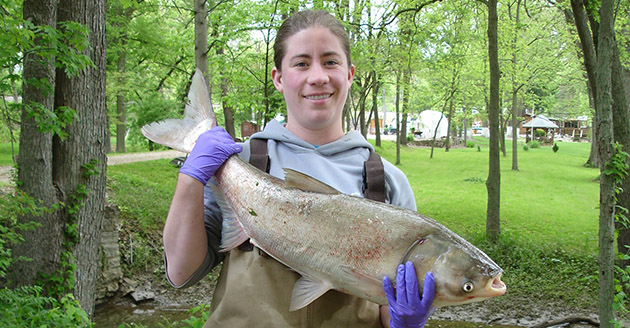 species by assessing where the species would survive and thrive. Thanks to research and an individual based model developed by a trio of FNR alumni - Drs. David and Alison Coulter and Dr. Zach Feiner - the possibility is not far from reality in relation to invasive carp in Wisconsin rivers and beyond.
species by assessing where the species would survive and thrive. Thanks to research and an individual based model developed by a trio of FNR alumni - Drs. David and Alison Coulter and Dr. Zach Feiner - the possibility is not far from reality in relation to invasive carp in Wisconsin rivers and beyond.
Dr. Obed Hernandez-Gomez, a 2017 PhD alumnus, talked about the genetics of hellbenders in this video on the Help the Hellbender lab Facebook page.
PhD student Sylvia Park, who is advised by Dr. John Couture, presented on hyperspectral characterization of fine scale physiochemical changes of trees to stress at the Purdue Digital Forestry Retreat.
December 2022 PhD alumnus David Savage pivoted from planned research on coffee plantations in Colombia to a similar project utilizing acoustic recorders on vineyards domestically in California and Indiana. Learn more about Savage in this FNR Grad Student Spotlight.
December 2022 PhD alumnus RD Sample shared about “Assessing White-Tailed Deer Browsing in Woodlands” in an article in the Indiana Woodland Steward newsletter.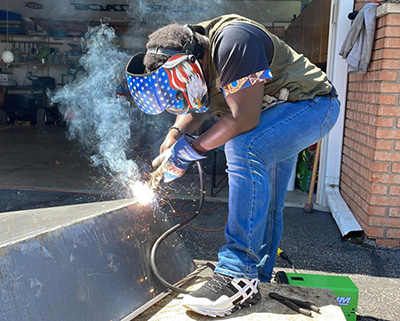
Francis Asare, who received his master's degree in December, left Ghana in January 2021 to pursue his dreams and ensure a better life for his family. His research aims to create a conversion method that can be used to burn charcoal, while converting the agro-industrial residues in biochar to improve soil properties, crop production, and sequester carbon in the soil. Meet Francis and learn more about his research in this FNR Graduate Student Spotlight.
FNR Presentations
Several FNR faculty and staff members presented live demonstrations, educational sessions and children’s programming at the Hoosier Hardwood Festival at the Boone County Fairgrounds, September 9-11. Topics covered digital forestry, woodworking demonstrations, urban forestry, safe chainsaw operation, magical wood, forest improvement, tree ID, woodland wildlife and cutting your own logs/lumber. The Purdue Student Chapter of Environmental Education (SCEE) also participated in the event.
Dr. Bryan Pijanowski spoke on biodiversity and soundscapes at Think Corner Helsinki. His talk titled “The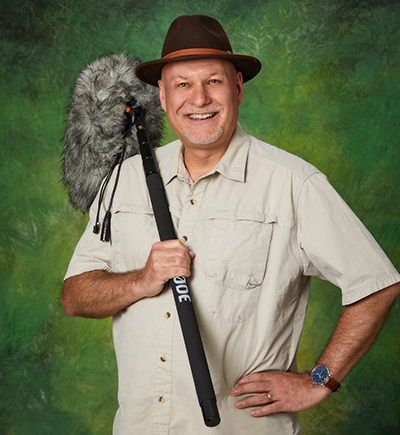 current biodiversity crisis needs creative solutions” was given in person at the Think Corner at the University of Helsinki in Finland on April 26 and livestreamed to a global audience.
current biodiversity crisis needs creative solutions” was given in person at the Think Corner at the University of Helsinki in Finland on April 26 and livestreamed to a global audience.
Dr. Rod Williams led a discussion on “Translating New Knowledge for Broader PK-12 Impacts” to emphasize opportunities for the Purdue Community to make their work accessible for broader audiences as part of the PK-12 webinar series. (March 28)
Extension wildlife specialist Brian MacGowan and forester Don Carlson spoke at the Ohio River Valley Woodland and Wildlife Workshop, presenting on managing woodlands for forest songbirds and a practical approach to safety in the woods.
Purdue Extension forester Lenny Farlee and extension wildlife specialist Jarred Brooke were a part of new videos stressing the importance of young forests, produced by the Ruffed Grouse Society and U.S. Forest Service. Brianne Lowe, a 2001 wildlife alumna, also is featured with Farlee in the Ruffed Grouse Society video, The Importance of Young Forests. Former FNR student Travis Swain, a forest silviculturalist on the Hoosier National Forest, appears with Brooke in the USFS video series.
Farlee also spoke on ponds built for fire prevention as part of the one-minute science video series.
Brooke, the 2021 PK-12 Outreach and Engagement Excellence Staff Award honoree, presented a speed talk as part of the 2022 Purdue Agriculture PK-12 Award Ceremony in April. Brooke also gave a seminar on natural resource extension at the Iowa State Department of Natural Resources Ecology and Management.
Dr. Paris Collingsworth co-chaired a session at the State of Lake Erie Conference highlighting research conducted during the 2019 intensive field sampling year in Lake Erie.
Dr. Jeff Dukes spoke on the CarbonSense podcast about why farmers should care about carbon. Dukes also organized a panel on Climate Justice Issues in the Midwest as part of the 2022 Martin Luther King Jr., events week put on by the College of Agriculture. Dukes also presented about “Studying how terrestrial ecosystems respond to human actions to (potentially) inform environmental decision making” as the Belcher Chair for Environmental Sustainability.
Dr. John Couture presented a webinar on hyperspectral phenotyping in precision agriculture as part of the Data-Driven Agriculture series.
Dr. Jason Hoverman spoke about his research on contaminants and about his background on the Amphibicast podcast.
Dr. Jake Hosen spoke about the importance of wetlands in the Indiana Environmental Reporter story “Indiana Wetlands Task Force Final Report Favors Wetlands Protection.”
FNR faculty, staff and students were a part of 13 presentations and posters at the annual meeting of The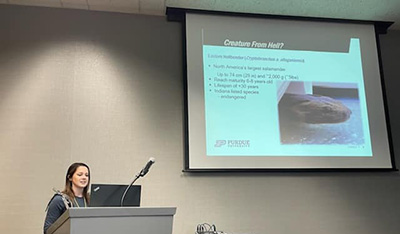 Wildlife Society in Spokane, Wash.
Wildlife Society in Spokane, Wash.
Dr. Jason Hoverman presented on his work with Dr. Marisol Sepulveda, Dr. Linda Lee and others at the Department of Defense’s SERDP-ESTCP Symposium in November, speaking on the topic of “Development of Toxicity Reference Values for PFAS in Amphibians.”
Hoverman and 2021 PhD alumnus D. Riley Rackliffe presented on stream health and aquatic invertebrates as a Wednesdays in the Wild Event presented by the Tippecanoe County Parks and Recreation Department.
Dr. Marisol Sepulveda presented on the “Effects of PFAS and the Short Chain Replacement Polymer GenX on Infection Dynamics of Chytrid Fungus in Gray Treefrogs (Hyla versicolor)" at the SETAC North America 42nd annual meeting of the Society of Environmental Toxicology and Chemistry in November.
Sepulveda also presented on “Use of Midges to Assess PFAS Mixture Toxicity” at the US Geological Society’s Columbia Environmental Research Center in October, and spoke about “A survey of forever chemicals in Indiana: does agricultural biosolid application contaminate wetland ecosystems with per- and polyfluoroalkyl substances (PFAS)?” at the 41st annual Indiana Water Resources Association Symposium in June.
Dr. Shaneka Lawson was part of a national panel for Forest Service personnel from the research stations and the Washington office at the WOC STEM Conference in Detroit in October. The panel discussed the role of women of color in STEM for the advancement of environmental justice and production of science for the better management of climate-smart forests, communities and economies.
FNR Extension Outreach
FNR Extension personnel resumed in-person events, while also continuing to offer virtual options for workshops as well as video series and question/answer blogs on the FNR Extension website and GotNature blog.
In 2022, videos on the FNR Extension YouTube channel accumulated 87,700 views, spanning 3,100 hours of watch time. Top videos included Lenny Farlee’s ID That Tree Series and the Moment in the Wild series put together by Dr. Rod Williams’ lab group.
- ID That Tree with Lenny Farlee – this series presents a different Indiana native tree each week. Nine new videos posted in 2022 bring the series to 109 total.
- Wildlife Habitat Hint with Jarred Brooke – this series featured one new video in 2022 (Sericia Lespedeza)
- A Moment in the Wild – Nick Burgmeier, Rod Williams, and Zack Truelock presented this 16-video
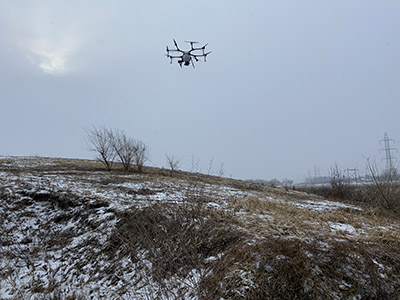 series on salamanders, turtles, snakes, frogs, and toads as well as related habitat issues.
series on salamanders, turtles, snakes, frogs, and toads as well as related habitat issues. - Hellbender videos – Dr. Rod Williams's research lab and Help the Hellbender team released 15 videos in 2022.
- Nature of Teaching videos – this series of activity/lesson plan videos and webinars is part of the Nature of Teaching signature extension program created by Dr. Rod Williams
- Drone Seeding Native Grasses and Forbs: Seed Mixing & Project Overview and Drone Setup – This four-video series from Jarred Brooke gives details of research project using a drone to frost seed native grasses and forbs at the Ivy Tech Community College campus.
FNR Extension Publications
American Paddlefish – consumer guide that describes fish and shellfish farmed in the Midwest region of the United States.
Environmental Planning in Community Plans - provides examples of the connection between each type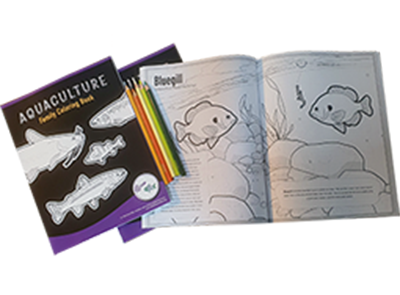 of plan and environmental planning, along with instructive examples from Indiana communities.
of plan and environmental planning, along with instructive examples from Indiana communities.
Aquaculture Family Coloring Book - Each spread highlights one species, pairing a beautifully illustrated coloring page with accompanying text for advanced and beginning readers with information about fisheries, recreational fishing, and cooking tips.
A Guide to Small-Scale Fish Processing Using Local Kitchen Facilities – an overview of what a fish producer thinking about small-scale fish processing needs to know, including training requirements and available facilities and highlights of select farmers who have gone through the process.
Preparing Indiana’s Urban Forest for Climate Change - Choosing species of trees that will thrive in urban settings has always required careful consideration, but climate change is making that task even more important. In this paper, Purdue and other researchers provide tools to help urban foresters, arborists and planners adapt so that the ecosystem services that trees provide can be maintained.
Research Publications
2020 master’s degree alumnus Scott Koenigbauer published an article about his work with cisco in the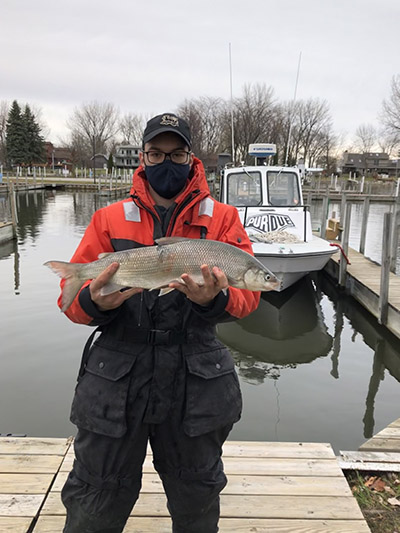 Journal of Great Lakes Research titled "Variation of cisco egg size among Laurentian Great Lakes populations."
Journal of Great Lakes Research titled "Variation of cisco egg size among Laurentian Great Lakes populations."
Alumna Zoe Almeida published her research on nutrient loading effects on fish habitat quality in this Freshwater Biology article. Almeida studied under Dr. Tomas Hook, graduating in 2016 with a master’s in FNR and ESE.
2022 PhD alumna Taylor Stinchcomb published her qualitative study from the Integrated Deer Management Project titled “Complex human-deer interactions challenge conventional management approaches: the need to consider power, trust and emotion” in Ecology and Society.
Compliance under control: Insights from an incentive-based conservation program in rural Bolivia, which was published in Ecological Economics (Volume 194, April 2022, 107317), found that less restrictive contracts as well as large areas under contract were more likely to be in compliance with incentive-based programs. Authors are Brooke McWherter, Zhao Ma and Meagan Rathjen from FNR, Jonathan Bauchet in Ag Econ and Tara Grillos in political science as well as Nigel Asquith and Andrea Markos of Cuencas Sustentables in Bolivia.
Former PhD student Anna Erwin, former post-doc Ruxandra Popovici, Dr. Zhao Ma and Chelsea Silva, Laura Zanotti in the department of anthropology, Jonathan Bauchet in Ag Econ and colleagues from Peru, collaborated on and published a paper, “Linking migration to community resilience in the receiving basin of a large-scale water transfer project” in Land Use Policy (Volume 114, March 2022, 105900).
Erwin, Popovici and Ma, along with Dr. Linda Prokopy, also published their findings regarding the case of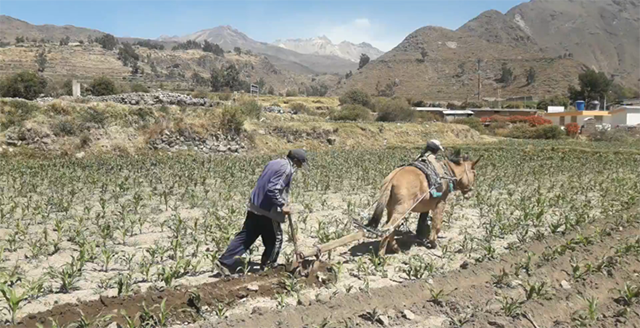 decision makers and water users in Peru in an article titled "Maladaptive learning in Peru's integrated water resources management" in Environmental Science and Policy (Volume 127, Jan. 2022, Pages 209-217).
decision makers and water users in Peru in an article titled "Maladaptive learning in Peru's integrated water resources management" in Environmental Science and Policy (Volume 127, Jan. 2022, Pages 209-217).
Erwin also published “Grower influence during a participatory project with farmworkers” in Geoforum discussing how growers can influence organization capacity to support meaningful farmworker participation.
Erwin, Ma, Popovici, Silva, Zanotti and Bauchet also published “Centering Community Voices in Mining Governance” in Society and Natural Resources, which highlights community-driven approaches to addressing mining governance in Peru.
December PhD alumnus RD Sample published the paper “Stump Sprouting Performance of Common Tree Species in the Midstory of Hardwood Forests in Indiana,” with co-authors Jarred Brooke and Dr. Mike Jenkins in Forest Science.
2021 PhD alumna and former postdoctoral researcher Becca Nixon published “Social Influence Shapes Adaptive Water Governance: Empirical Evidence from Northwestern Pakistan” in Ecology and Society. Dr. Zhao Ma was a co-author on the paper.
The Purdue Extension Land Use Team conducted a comprehensive overview study of land use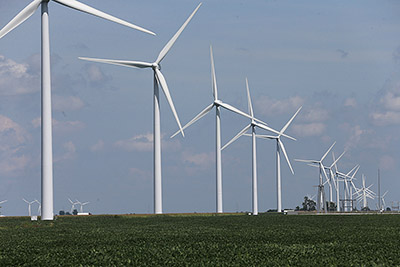 regulations for wind and solar energy. The inventory report and county snapshots are available under the renewable energy tab on the community development website.
regulations for wind and solar energy. The inventory report and county snapshots are available under the renewable energy tab on the community development website.
Dr. Eva Haviarova published a book chapter titled “Baseball – Finding the Sweet Spot,” in the book Wood in Sport Equipment – Heritage, Present, Perspective edited by Francesco Negro. The e-book is available online.
Phenological response to climate variation in a northern red oak plantation: links to survival and productivity – PhD alumnus Jonathan Knott, Drs. Jeff Dukes, Rob Swihart and Songlin Fei. Ecology, Volume 104, Issue 3, December 2022, e3940.
Beyond blight: Phytophthora root rot under climate change limits populations of reintroduced American chestnut; Dr. Doug Jacobs. Ecosphere, Volume 13 Issue 2, February 2022, e3917.
Understanding barriers and opportunities for diffusion of an agricultural decision-support tool: An organizational perspective. Pranay Ranjan, Emily Usher, Dr. Linda Prokopy. Journal of Hydrology, Volume 607, April 2022, 127584
Temperature affects the toxicity of pesticides to cercariae of the trematode Echinostoma trivolvis. Master’s alumnus Logan Billet, Dr. Jason Hoverman in Aquatic Toxicology, Volume 245, April 2022, 106102.
Factors influencing seed mix design for prairie restoration. Dr. Zhao Ma in Restoration Ecology, Volume 30, Issue 5, October 2021, e13581.
Social Vulnerability to Irrigation Water Loss: Assessing the Effects of Water Policy Change on Farmers in Idaho, USA. Master’s alumnus Jason Hawes, Dr. Zhao Ma in Environmental Management 69, 543-557 (2022).
Adaptation to Social-Ecological Change in Northwestern Pakistan: Household Strategies and Decision-Making Processes. PhD alumna Rebecca Nixon, Dr. Zhao Ma along with Dr. Laura Zanotti, Department of Anthropology, and Dr. Linda Lee, Department of Agronomy, in Environmental Management.
Drivers of revitalization in Great Lakes coastal communities. PhD alumna Rebecca Nixon, Dr. Zhao Ma, Dr. Stuart Carlton in Journal of Great Lakes Research
The Lay of the Land: What We Know About Non-Operating Agricultural and Absentee Forest Landowners in the U.S. and Europe. Dr. Zhao Ma in Journal of Environmental Management, Volume 313, 114991.
Epigenetics in Ecology, Evolution and Conservation. Mark Christie and Andrew DeWoody with PhD alumna Janna R. Willoughby in Frontiers in Ecology and Evolution, Volume 10, April 2022.
Variability in fish and water hydrogen and oxygen stable isotope values in the nearshore region of a large water body; Dr. Tomas Hook, Carolyn Foley in Journal of Great Lakes Research, Volume 48, Issue 5, October 2022, Pages 1239-1247.
A new GTSeq resource to facilitate multijurisdictional research and management of walleye Sander vitreus. Peter Euclide in Evolution and Ecology, Volume 12, Issue 12, December 2022, e9591.
Population genetic and genomic analyses of Western Massasauga (Sistrurus tergeminus ssp.): implications for subspecies delimitation and conservation. Rian Bylsma, Andrew Black and Dr. Andrew DeWoody in Conservation Genetics 23:271-283.
Dominance can increase genetic variance after a population bottleneck: a synthesis of the theoretical and empirical evidence. Dr. Andrew DeWoody in Journal of Heredity, Volume 113 Issue 3, May 2022, p. 257–271.
Neurodevelopmental copy-number variants: A roadmap to improving outcomes by uniting patient advocates, researchers, and clinicians for collective impact. Dr. Andrew DeWoody as part of Commission on Novel Technologies for Neurodevelopmental Copy Number Variants in American Journal of Human Genetics, Aug 2022, 109 (8): 1353-1365.
Orthologous microsatellites, transposable elements, and DNA deletions correlate with generation time and body mass in neoavian birds. Dr. Andrew DeWoody in Science Advances, September 2022, 8 (35): eabo0099.
The Threatened Species Imperative: Conservation assessments would benefit from population genomic insights. Dr. Andrew DeWoody, Jong Yoon Jeon, Erangi Heenkenda, Safia Janjua, Andrew Black and Anna Bruniche-Olsen in Proceedings of the National Academy of Sciences, USA. August 15, 2022, 119 (35) e2210586119.
Acute Toxicity of Eight Aqueous Film-Forming Foams to 14 Aquatic Species. Drs. Marisol Sepulveda and Jason Hoverman, Devin K. Jones, Kathryn Quinlin, Maggie Wigren, David L. Haskins in Environmental Science and Technology, 2022, 56, 10, 6078-6090.
An Environmentally Relevant Mixture of Perfluorooctanesulfonic Acid and Perfluorohexanesulfonic Acid Does Not Conform to Additivity in Northern Leopard Frogs Exposed through Metamorphosis. Tyler Hoskins, Elizabeth Allmon, R. Wesley Flynn, Drs. Jason Hoverman and Marisol Sepulveda in Environmental Toxicology and Chemistry. 41 (12), 3007-3016.
Comparative Toxicity of Aquatic Per- and Polyfluoroalkyl Substance Exposure in Three Species of Amphibians. R. Wesley Flynn, Gary Hoover, Michael Iacchetta, Samuel Guffey, Drs. Jason Hoverman and Marisol Sepulveda in Environmental Toxicology and Chemistry. 41 (6), 1407-1415.
Effects of Per- and Polyfluoroalkyl Substance Mixtures on the Susceptibility of Larval American Bullfrogs to Parasites. Melissa Lech, Drs., Jason Hoverman and Marisol Sepulveda in Environmental Science and Technology. 56 (22), 15953-15959.
Experimental evidence that host species composition alters host–pathogen dynamics in a ranavirus–amphibian assemblage. Dr. Jason Hoverman in Ecology, October 10, 2022, e3885.
Exposure to clothianidin and predators increases mortality for heptageniidae. D. Riley Rackliffe and Dr. Jason Hoverman in Aquatic Toxicology, Volume 246, May 2022, 106146.
Pathogens and predators: examining the separate and combined effects of natural enemies on assemblage structure. Dr. Jason Hoverman in Oecologia, 200, 307-322 (August 2022).
Persistence of amphibian metapopulation occupancy in dynamic wetlandscapes. Dr. Jason Hoverman in Landscape Ecology, 37 (3), 695-711 (January 2022).
Pesticides alter ecosystem respiration via phytoplankton abundance and community structure: Effects on the carbon cycle? Dr. Jason Hoverman in Global Change Biology. 28 (3), 1091-1102.
Population-level variation in pesticide tolerance predicts survival under field conditions in mayflies. D. Riley Rackliffe and Dr. Jason Hoverman in Ecotoxicology. 31 (10), 1477-1484.
Temperature affects the toxicity of pesticides to cercariae of the trematode Echinostoma trivolvis. Logan Billet and Dr. Jason Hoverman in Aquatic Toxicology. Volume 245, April 2022, 106102.
Emerging trends in nanoparticle toxicity and the significance of using Daphnia as a model organism. Zhiquan Liu, Christopher Malinowski and Dr. Marisol Sepulveda in Chemosphere. Volume 291, Par 2, March 2022, 132941.
Oil induced cardiac effects in embryonic sheepshead minnows, Cyprinodon variegatus. Elizabeth Allmon, Grace Carter and Dr. Marisol Sepulveda in Chemosphere. Volume 288, Par 1, February 2022, 132482.
Density from pellet groups: Comparing methods for estimating dung persistence time. Zachary Delisle, Brandon Quinby, R.D. Sample, undergraduates Kevin Kinser-Mcbee and Emily Tauber, Drs. Rob Swihart and Elizabeth Flaherty in the Wildlife Society Bulletin.
Imperfect detection and wildlife density estimation using aerial surveys with infrared and visible sensors. Zachary Delisle, Pat McGovern, Dr. Rob Swihart in Remote Sensing in Ecology and Conservation.
Habitat selection in a recovering bobcat (Lynx rufus) population. Landon Jones, Drs. Rob Swihart and Pat Zollner in PLOS One. 17 (8): e0269258.
Estimating statewide carrying capacity of bobcat (Lynx rufus) using improved maximum clique algorithms. Landon Jones, Drs. Rob Swihart and Pat Zollner in Landscape Ecology. 37, 2383-2397 (2022).
Phenological response to climate variation in a northern red oak plantation: links to survival and productivity. Jonathan Knott, Drs. Jeffrey Dukes, Rob Swihart and Songlin Fei in Ecology. Published December 2022. Volume 104, Issue 3, March 2023, e3940.
Response of terrestrial salamanders to the decade following timber harvest in hardwood forests. Allison Ochs, Drs. Mike Saunders and Rob Swihart in Forest Ecology and Management. Volume 511, May 2022, 120159.
Expanding and evaluating public satisfaction with wildlife governance: insights from deer management in Indiana, USA. Taylor Stinchcomb, Drs. Zhao Ma and Rob Swihart in Environmental Management. 70, 780-792 (2022).
Evaluating the cascading-use of wood furniture: How value-retention processes can contribute to material efficiency and circularity. Kendria Huff and Dr. Eva Haviarova in Journal of Industrial Ecology, May 24, 2022.
Comparative study on the properties of cellulose nanofiber (CNF) and cellulose nanocrystals (CNC) reinforced 1C-PUR adhesive-bonded wooden joints. Dr. Eva Haviarova in Construction and Building Materials. Volume 344, August 15, 2022, 128262.
Effect of cellulose nanofiber and cellulose nanocrystals reinforcement on the strength and stiffness of PVAc bonded joints. Dr. Eva Haviarova in Composite Structures. Volume 295, Sept. 1, 2022, 115821.
Sustainable marine aquaponics: effects of shrimp to plant ratios and C/N ratios. Yu-Ting Chu and Dr. Paul Brown in Frontiers in Marine Science. 8:771630.
Optimal dietary crude protein in commercial feeds for shrimp and halophytes in marine aquaponic biofloc systems. Yu-Ting Chu and Dr. Paul Brown in Frontiers in Marine Science. 9:824973.
Supplemental C addressed the pH conundrum in sustainable marine aquaponic food production systems. Yu-Ting Chu and Dr. Paul Brown in Foods 2023, 12 (1), 69.
Effects of feed formula and farming system on the environmental performance of shrimp production chain from a life cycle perspective. Peng Chen and Dr. Paul Brown in Journal of Industrial Ecology. Volume 26, Issue 6, p. 2006-2019.
Comparing the effects of environmental enrichment, seasonality, and soft release on site retention and survivorship of captive-reared Eastern Hellbenders (Cryptobranchus alleganiensis alleganiensis). Nick Burgmeier, Emily McCallen, Erin Kenison and Dr. Rod Williams in BioOne Complete. December 14, 2022.
Genetically derived effective population size estimates of herpetofaunal species should be used with caution. Dr. Rod Williams in Journal of Wildlife Management. Volume 87, Issue 2, e22340.
Aquaculture extension capacity in the Midwest: Results of a Survey. Stuart Carlton, Amy Shambach and Kwamena Quagrainie in the Journal of Human Sciences and Extension. In Press.
Trust and collaboration connect remediation and restoration to community revitalization. Becca Nixon, Stuart Carlton and Zhao Ma in Journal of Landscape and Urban Planning. In Press.
An evolutionary perspective on contemporary genetic load in threatened species as informed by whole genome resequencing and forward-time simulations. Samarth Mathur and Dr. Andrew DeWoody in Evolution. In Press.
Through the Looking Glass: A Glimpse at the journey of women and minorities through the natural resource fields. Dr. Shaneka Lawson. Abbreviated proceedings paper presented at the Hawaii International Conference on Education in Honolulu in January 2022. Complete version is in reviews.
